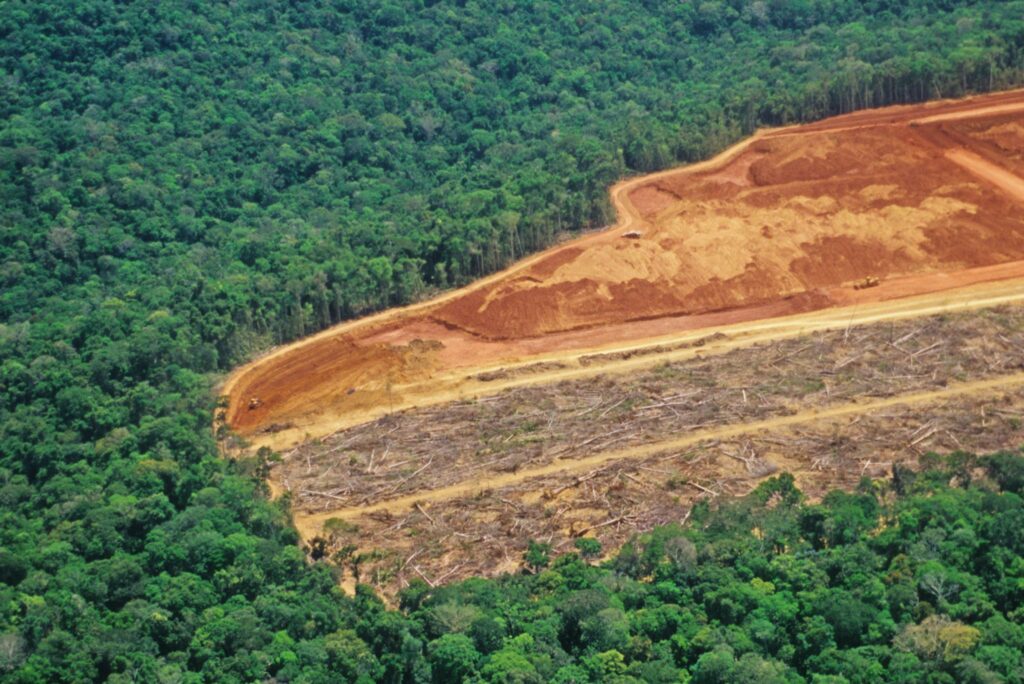Managing Flood Risk: How Is Deforestation Related to Erosion and Flooding?
We know that factors such as climate change and urban development can increase flood risk, but how is deforestation related to erosion and flooding?

Deforestation has a profound impact on the environment in ways that can be seen—and many that can’t. The effects of deforestation on some regions of the world are still being studied, and the results are never positive.
One of the most common long-term effects of deforestation that is not always taken into account is flooding. The deforestation of the Amazonian rainforests and even the clearing of smaller wooded areas in the United States can lead to flooding in several different ways.
Does Deforestation Cause Soil Erosion?
When deforestation occurs the roots of the trees and smaller vegetation that previously helped hold the soil in place are no longer there. Without them, the once-healthy layer of topsoil can be blown away by the wind or washed away by rain.
Can Deforestation Cause Flooding?
During heavy rainfall, healthy topsoil is able to absorb much of the water to prevent flooding. This is because the soil is not too compacted to prevent the water from sinking in, and the organic material within the soil is able to soak up the water and slowly absorb it.
However, the soil that is left over when the topsoil is gone is not able to absorb water nearly as quickly. Instead, the water will build up and run off, making flood damage much more likely.
The erosion caused by deforestation can also make mudslides and mudflows more likely. When tree roots and vegetation aren’t there to hold the soil in place, a large amount of rainfall can wash it away. Trees also serve as barriers to slow the flow of mudslides, especially in heavily sloped areas such as the side of a large hill or mountain.
How Do Forests Prevent Floods?
One of the primary ways that forests prevent flooding is by catching and absorbing water. Many floods are not caused by a single event but are due to the buildup of water over several days of heavy precipitation. When a significant rainstorm eventually occurs, there is already too much water in the ground and the new rainwater has nowhere to go.
During the process of photosynthesis, trees soak up water through their roots and then release it into the atmosphere as oxygen. The average tree will absorb between 10 and 150 gallons of water every day. A forest plays a key role in preventing water from building up in the soil over time, which lessens the chance that a heavy rainstorm will lead to flooding.
How Do Wetlands Reduce Flooding and Erosion?
Wetlands are important assets in reducing flooding and erosion because they preserve the natural flow and drainage of water. They are able to absorb large amounts of runoff water and slow it down, preventing it from flooding other areas. The thick vegetation of a wetland area also keeps the soil in place and prevents it from eroding.
Examples of Flooding Caused by Deforestation
There are examples of flooding caused by deforestation all over the world. After the steady destruction of the Amazon rainforest, many flooding disasters that have taken place in Brazil can be attributed in part to deforestation.
Haiti has lost almost all of its forests over the years, which scientists say is causing a mass extinction event. The country has also experienced massive flooding from tropical storms and hurricanes that have killed thousands of people.
Likewise, Indonesia has undergone large-scale deforestation due to the palm oil industry there. Massive flooding and landslides that hit the country in 2021 were linked to deforestation.
How Climate Change Leads to Flooding
Climate change has been changing the map of potential flooding across the world. At the most basic level, warmer weather leads to more water evaporation, which in turn leads to more precipitation. In the past few years, climate researchers are seeing a shift in where potential floods are taking place, and have come to predict that flash flooding events are likely to become more common in the future.
Deforestation due to wildfires is also becoming increasingly common due to climate change, which in turn leads to a higher likelihood of flash flooding.
Flooding in Developed Areas
While natural landscapes are typically good at preventing flooding due to their ability to absorb and drain water, urban areas struggle to get rid of water as quickly. When heavy rainfall hits streets and sidewalks, it can quickly overwhelm a city’s stormwater drain system. The same amount of rainfall that might not be an issue in a rural area can create a dangerous and unpredictable flash flood in an urban area.
What Is My Flood Risk?
Climate change and major ecological shifts such as deforestation may have changed your flood risk in recent years. Homes and businesses that were previously not considered to be in a flood risk zone are now being reassessed. FEMA does provide a way to check an updated flood map to see what your flood risk might be.
It’s always a good idea to continuously check your flood risk and develop a plan of action in case your home or business faces flood damage. You may have only days or hours of warning to prepare a flood prevention system.
How TrapBags Can Prevent Flooding
TrapBag flood barriers have been proven to prevent floodwaters from reaching homes, businesses, and critical infrastructure. TrapBags are similar in basic concept to sandbags, except they have been expertly engineered to be more efficient, cost-effective, and easier to deploy.
A 100-foot section of a 4-foot-tall TrapBag flood barrier can be deployed in a matter of hours with a small crew and a piece of heavy equipment such as a front-end loader. They have been used to prevent lakeshore and oceanfront erosion from destroying homes, create levees alongside rising rivers, and protect against mudslides.
Plan Your Flood Control Solutions
To start planning your flood response system with TrapBag, feel free to reach out to our staff. We are happy to talk with you about how TrapBag can be an affordable solution to manage your flood risk.
Meet the author
Get the Dirt Before the Flood Hits
Stay ahead of flooding, erosion, and disaster response challenges. The Dirt, TrapBag’s monthly newsletter, delivers field-tested tips, real-world case studies, and the latest in barrier technology straight to your inbox.

